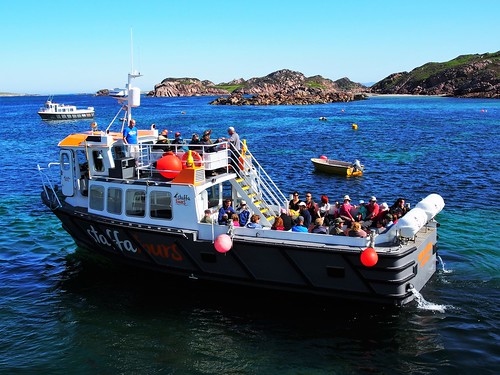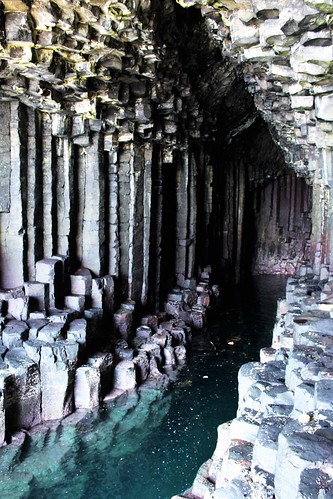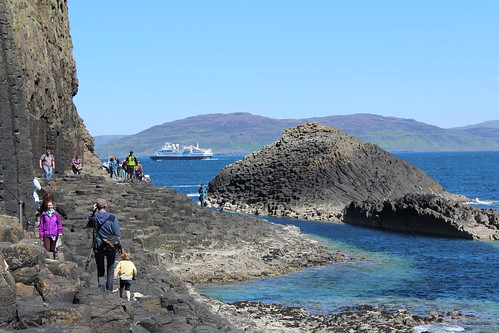Staffa, Inner Hebrides, Scotland
Above image is of typical tourist boat trip to Staffa.
This evening, I am posting information on the island of Staffa which is located about 6 miles from the islands of Mull and Iona.
Staffa extends to about 82 acres and is uninhabited. It is now designated a National Nature Reserve under ownership of the National Trust for Scotland. However, day trips by tourists are permitted.
Basalt columns
More information:
- The name is a function of the island's geology being derived from the Old Norse word stafr meaning staff and reflects the columnar basaltic rocks resembling staves which were formed by volcanic activity about 60m years ago when the Atlantic Ocean was formed.The lava is underlain by a thin layer of volcanic ash. The lowest lava flow cooled slowly producing the most spectacular colonnade structures. These formed perpendicularly to the cooling surface at the base of the flow. Most of the columns are hexagonal, but five-sided and seven-sided columns can be found as well. The columnar structure is seen throughout the island but is at its most spectacular in the vicinity of Fingal’s Cave.This geology is similar to and contemporary with that at the nearby Giants Causeway in Northern Ireland.
- Many prominent authors from the literary and arts world visited Staffa during the 19th century including the composer Felix Mendelssohn (in 1829). Inspired by the cave acoustics Mendelssohn wrote the overture, 'Fingal's Cave'.
- Visitors can access Staffa via commercial boat trips from Iona and Fionnphort (Isle of Mull) which are about ten minutes apart. There is also access from the port of Oban on the mainland.Landing on the island is only possible in calm weather conditions.
- All animals have been removed from Staffa leaving the island the preserve of wildlife such as puffins (in season), kittiwakes, common shags, and gulls. In the waters can be found grey seals, dolphins, basking sharks, minkie whales and pilot whales.
Cliffs
View of Fingal's Cave
Inside Fingal's Cave
On way to Fingal's Cave








Comments
Post a Comment